Wildfire safety tips: What to do BEFORE - DURING - AFTER a wildfire
Due to climate change and human activities, wildfires have been more frequent and more intense. While residents in forested areas are most vulnerable, even those living in major cities feel the effects of poor air quality. Therefore, here are crucial wildfire safety tips you should remember. Weather365 will disclose what to do before - during - after a wildfire. Let’s explore.
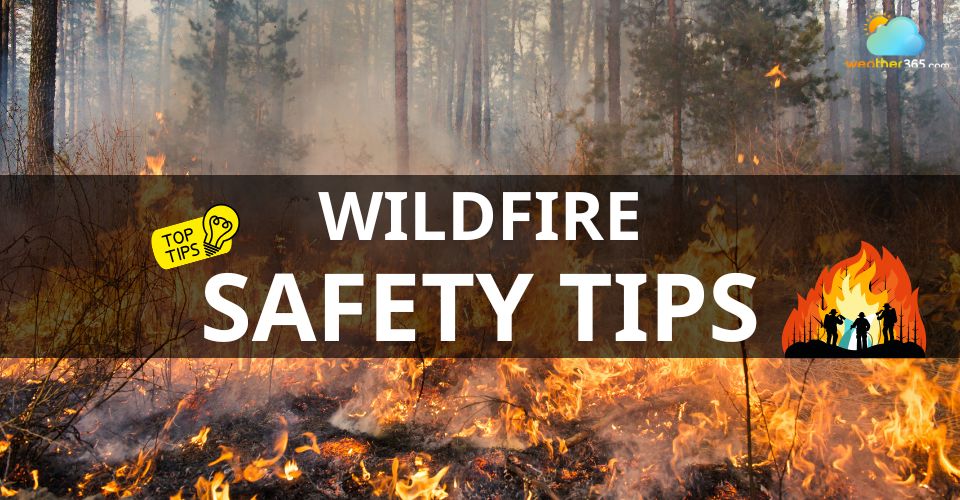
What to do before-during-after a wildfire
Wildfire watches and warnings
Before learning any wildfire safety tips, you need to know the differences between wildfire watches and warnings.
Distinguish these fire alerts, you can be proactive to take the right action: Prepare or Do immediately.
-
Wildfire WATCH: Be prepared! Some weather conditions can lead to wildfire.
-
Wildfire WARNINGS: Be alert! A wildfire warning is issued when a wildfire is imminent or already active.
-
Extreme fire BEHAVIOR: Take action! A current wildfire can be too strong to control. Listen to your local authorities for important safety instructions.
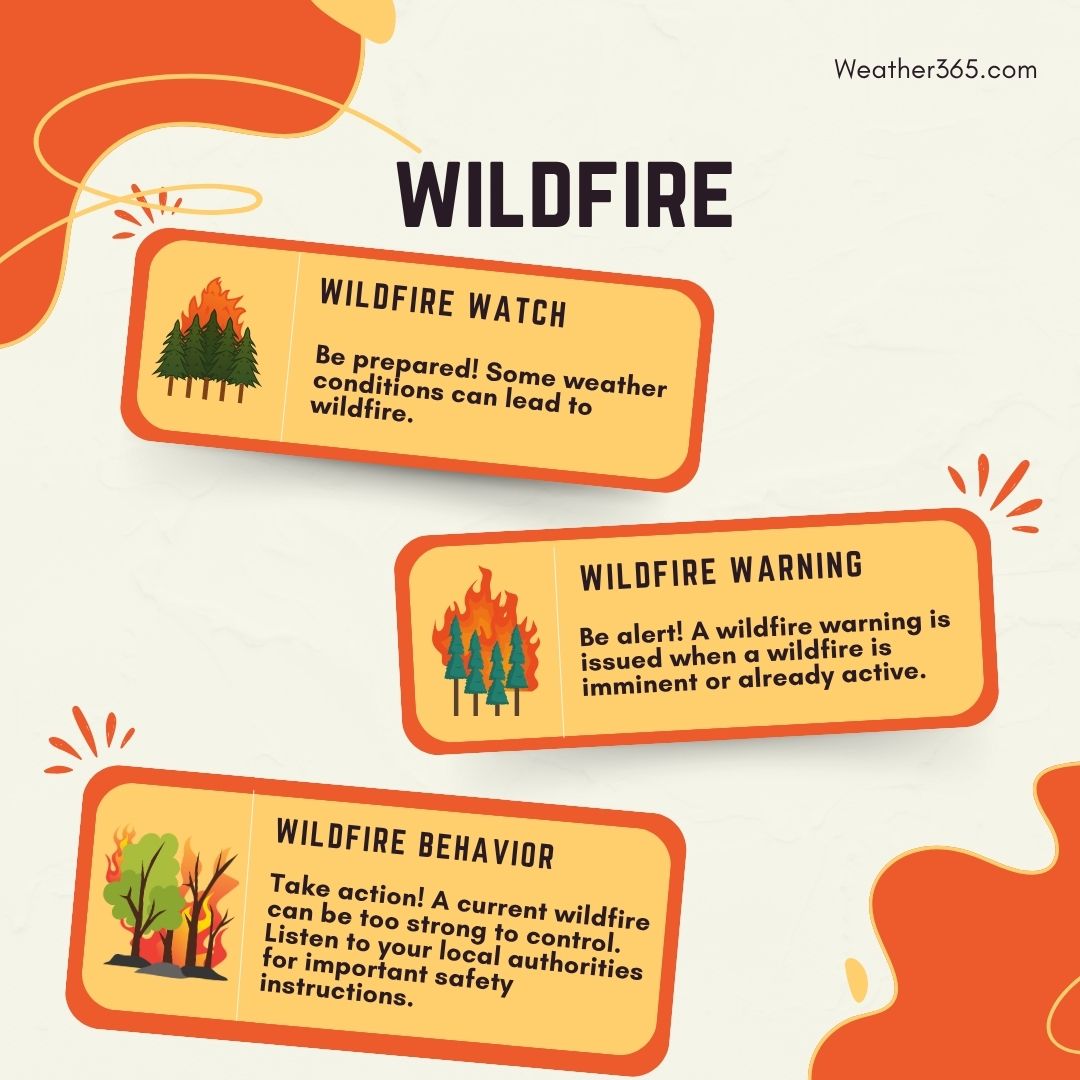
Wildfire alerts
Wildfire Safety Tips BEFORE a wildfire
Wildfires can happen unexpectedly and spread quickly, especially in dry, forested, or rural areas.
Preparing in advance can save lives and reduce property damage.
Here are key wildfire safety tips before a wildfire strikes:
1. Talk About Wildfires With Your Family
Discuss what causes wildfires and how to stay safe.
Use simple, age-appropriate language so children understand the dangers and know what to do in an emergency.
2. Know Your Wildfire Risk
Check if your home is in a wildfire-prone area by contacting your local fire department or state forestry office.
Learn local fire laws and sign up for emergency and weather alerts to stay informed.
3. Create a Family Emergency Plan
Plan evacuation routes (at least two) and safe meeting points.
Practice evacuation drills with family members and include your pets.
Make sure children know how to reach you if separated.
4. Prepare an Emergency Kit
You should pack essentials in your emergency kit, including:
-
Non-perishable food and water for several days
-
Medications like antibiotics, pain relievers ( prescription drugs), and a first aid kit
-
N95 or KN95 masks (for both adults and children)
-
Flashlight, batteries, and a portable radio
-
Cash and important documents (IDs, birth certificates, insurance papers)
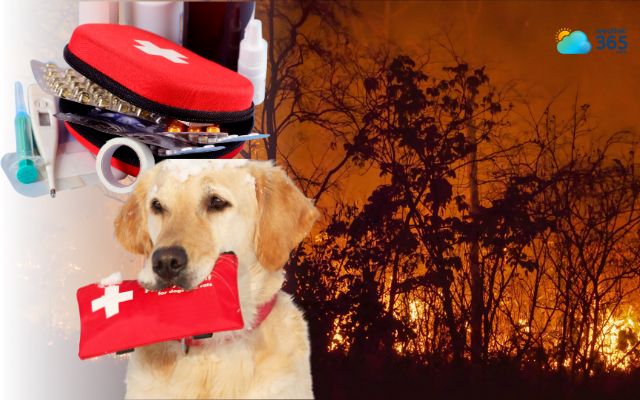
Prepare an emergency kit
5. Make Your Home Wildfire-Resistant
Create a fire-safe zone around your home by clearing leaves, dry vegetation, and flammable materials at least 10 meters from buildings.
Trim branches near the house and keep gutters clean.
6. Protect Vulnerable Family Members
Children, seniors, and people with chronic illnesses are more sensitive to wildfire smoke.
Prepare extra medical supplies, and consider air filters for your home to reduce smoke exposure.
7. Coordinate With Caregivers and Schools
Know your child’s school or daycare evacuation plan.
Be prepared to pick up your children from an alternate location if needed.
8. Plan for Pets and Neighbors
Include pets in your evacuation plan and prepare carriers or leashes.
Check on neighbors, especially seniors and people with disabilities, who may need assistance during a wildfire emergency.
Wildfire Safety Tips DURING a wildfire
When a wildfire strikes, every second counts.
Being prepared and knowing what to do can help keep you and your family safe.
Follow these wildfire safety tips to reduce risk and protect your health.
1. Stay Informed
Wildfire conditions can change rapidly. Stay tuned to local radio, TV, or official emergency alert systems for real-time updates.
Always follow evacuation orders and official instructions because they know the safest routes and shelter options.
2. Prepare to Evacuate
-
Have your wildfire emergency kit ready. It should include essential supplies like water, non-perishable food, medications, flashlights, and important documents.
-
Wear protective clothing: sturdy shoes, long pants (preferably denim, cotton, or wool), long-sleeved shirts, and gloves.
-
Lock your home before you leave, and take your emergency kit with you.
3. Minimize Smoke and Fume Exposure
Wildfire smoke health effects are serious. It can irritate lungs, trigger asthma, and even contain toxic particles.
Thus, keep children and infants indoors whenever possible.
Close all windows and doors to prevent wildfire smoke and ashes from entering your home.
Run air conditioning with the fresh air intake closed and use portable air purifiers if available.
Limit outdoor activity and drink plenty of water to stay hydrated.
If you need to go outside, wear an N95 or KN95 mask. For children over age 7, choose small or extra-small adult masks when possible.

Wear an N95 or KN95 to reduce exposure to smoke
4. Protect Your Home if Time Allows
If evacuation is not immediately required and it’s safe to do so, you can reduce fire risks around your home:
-
Move flammable items like furniture and gas grills away from your house.
-
Cover vents, windows, and doors with fire-resistant plywood at least ½ inch thick.
-
Attach hoses to active spigots and place water-filled buckets around your home.
-
Use sprinklers on your roof (only if it’s safe) to extinguish embers.
-
Remove fabric curtains and clean or replace air filters to improve indoor air quality.
-
Fill tubs and sinks with water for cleaning and emergency use.
5. Follow Evacuation Orders Immediately
If local authorities advise you to evacuate or if your home is at risk:
Leave immediately with your emergency kit.
Avoid driving unless evacuating, which keeps roads clear for emergency vehicles.
Relocate to an area with cleaner air to reduce smoke exposure.
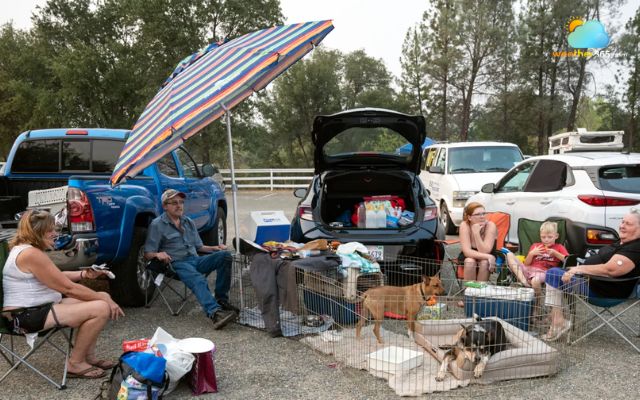
Follow evacuation orders from local authorities
Wildfire Safety Tips AFTER a wildfire
Surviving a wildfire doesn’t end when the flames are extinguished. Its consequences can range from unsafe air quality to emotional stress. Here are essential wildfire safety tips for staying safe after a wildfire.
1. Get Permission Before Returning Home
Do not enter burned areas until fire officials declare it safe.
Even if the fire seems completely out, hazards such as fallen power lines, unstable trees, ash pits, and flare-ups can still pose serious risks. Always:
Check with local authorities for clearance to return.
Be alert for fire re-ignition or hidden smoldering areas.
2. Check Air Quality Before Going Outside
Wildfires can leave behind dangerous levels of smoke and particulates.
Check official air quality updates to know when it’s safe to breathe outdoors.
Keep windows and doors closed if air quality remains poor.
Use air purifiers indoors
Wear a face covering when working outside.
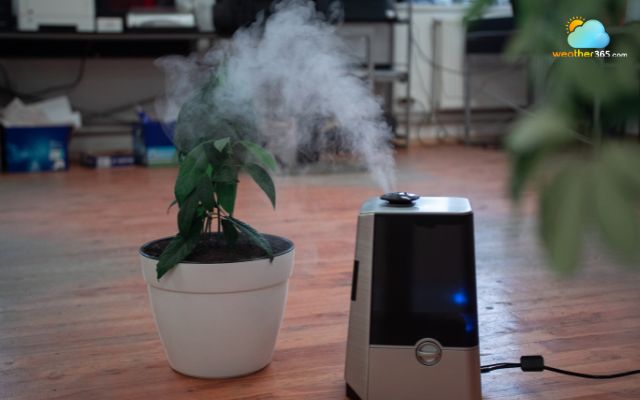
Use an air purifier when you are in a room
3. Clean Up Safely
Ash and fire debris can contain toxic materials. Follow public health guidance for proper cleanup:
Wear long-sleeved clothing, gloves, enclosed shoes, and an N95 or KN95 respirator when handling ash.
Pour water over debris to prevent inhaling dust particles.
Keep children and pets away from burned areas until cleanup is complete.
Avoid cleaning up alone. It should have at least two people do it together for safety and efficiency.
4. Handle Ash and Debris With Care
Never let children help with wildfire debris removal because it can be toxic and dangerous.
Watch out for ash pits, charred trees, or unstable structures.
Dispose of ash according to local regulations to prevent contamination.
5. Document Damage and Contact Your Insurance
Inspect your property for fire damage carefully and take photos or videos for insurance claims.
Contact your insurance company as soon as possible to begin the claims process.
6. Support Children Emotionally
Wildfires can be traumatic for children, even after the immediate danger passes.
Limit their exposure to graphic images and news coverage of the wildfire.
Watch for emotional or physical symptoms such as anxiety, trouble sleeping, or breathing problems.
Seek medical or mental health support if needed.

Seeking medical or mental health support
Conclusion
Wildfires are so powerful and devastating; therefore, it’s crucial to always get those wildfire safety tips in your pocket. Through this post, hope you understand fire alerts as well as know what to do when faced with a wildfire. Stay tuned for Weather365 to get more interesting information.
Related post

What is a wildfire? Characteristics, Types, and Facts you should know
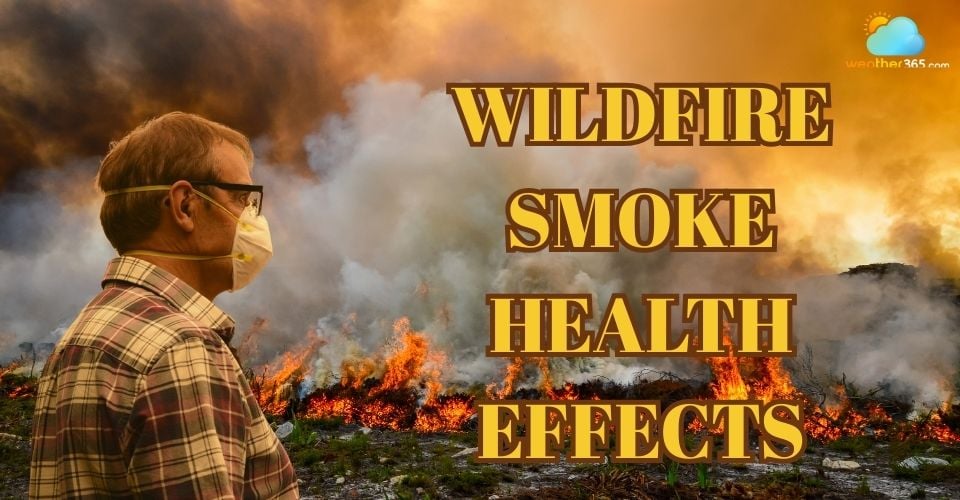

0 Comment
Leave a comment
Your email address will not be published. Required fields are marked *